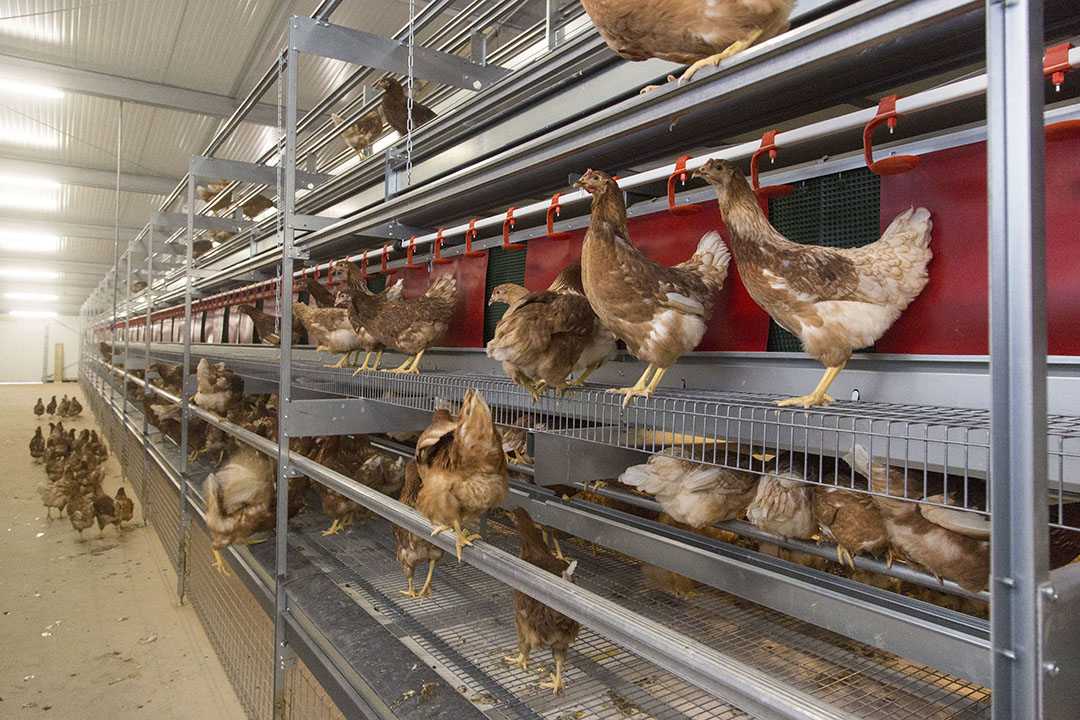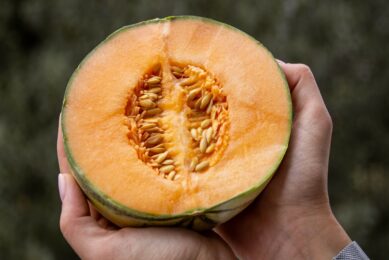Role of selenium yeast in bone quality

During the past decade, the advantages of selenium (Se) enriched yeast supplementation in animal production have been increasingly well understood. Recent research conducted on poultry showed that bone mineralisation and bone quality could also benefit from Se yeast supplementation.
Selenium is a trace element that protects animals from oxidative stress, which is of particular importance at times of increased challenges such as heat stress, intensive rearing conditions, reproduction, or to enhance the animal’s immune response. What is less well known is that Se is also a crucial trace element for osteoclast and osteoblast cell proliferation. With bone health becoming more important in animal production, and considered a key element in animal welfare, the role of selenium in bone quality gets extra attention.
Bone health: A growing issue
Bone health is a recurrent and increasing concern among production livestock. This is linked to several factors such as genetic selection (e.g., fast growing animals), more productive animals (e.g., more eggs produced per hen), and management practices (less activity, manipulation, risk of injury with equipment like perches, etc.). As a result, modern swine and poultry are exposed to various pathologies related to the skeleton with a significant impact on the economy of their production:
- lameness,
- peripartum hypocalcemia,
- hypocalcemia related to intoxication with pigweed,
- hypervitaminosis D,
- rickets,
- osteomalacia,
- osteopenia,
- osteoporosis,
- osteofibrosis, etc.
In cows, lameness is the third most common pathology after mastitis and reproductive disorders. It is also on the rise in cats and dogs, whose life expectancy is increasing but is accompanied by a high number of new osteoarticular problems (osteoporosis, arthritis, dysplasia, fractures, etc.). These locomotor problems also affect athletic horses and “senior” horses, whose population has significantly increased in the last 20 years.
Also read: Yeast products for healthy pets
Se and bone
Bones represent the second biggest reservoir of Se in the body after skeletal muscles. For instance, human bones contain approximately 80ng/g of this trace element. Investigations about the role of Se in bone mineralisation are quite recent.
Recent literature review (Zeng et al., 2013) indicates that the involvement of Se in bone health has mainly been attributed to its:
- Preventive function against oxidative stress
- Role in the inflammatory and immune system
- Involvement in cell division, proliferation and apoptosis processes.
It has been revealed that insufficient Se intake can lead to retarded growth and modification of bone metabolism. These effects are related to a reduction in bone mineral density and bone volume, in addition to impaired microarchitecture of the bone and increased bone resorption. Low levels of Se consumption have been associated with an increased risk of disease such as osteo-arthropathy and bone fractures. Furthermore, Se blood concentration is negatively correlated to bone turnover levels and positively correlated to bone mineral density in humans.
Se can be present in different chemical forms:
- seleno-methionine (SeMet),
- seleno-cysteine (SeCys),
- Se-methylselenocysteine (CH3SeCys),
- methyselenol (CH3SeH) and
- selenite (H2Se)
With various physiological effects, including:
- cell signalling and division,
- antioxidant protection,
- apoptosis,
- inactivation of osteoclasts,
- functioning of immune cells,
- inflammatory response (Figure 1).
Finally, studies have shown the beneficial effects of Se dietary supplementation for bone health in human and other animal species, including poultry (Zhang et al., 2017). We further investigated these effects in laying hens and broiler chickens.
Figure 1 – Molecular mechanisms underlying the effects of different chemical forms of Se on bone health (Zeng et al., 2013)

Evaluating different Se sources
When it comes to Se diet supplementation, various forms are available on the market: either mineral, such as Sodium Selenate or Selenite, or organic, such as Se yeast, and, more recently, synthetic Selenomethionine (SeMet). A benchmark study was conducted in broilers to compare the transfer rate of Se into the tibia bone, when different Se sources were supplemented, in order to assess their bioavailability.
A total of 8 different Se sources were fed at equivalent levels (0.2ppm), to day-old chicks for 14 days:
- 2 inorganic Se sources, sodium selenite (SS) and Se proteinate (SePro);
- 3 synthetic organic Se sources (Zn-SM, SM1, SM2);
- 3 commercial Se-enriched yeast (SeY1, SeY2, Alkosel).
Alkosel is a premium Se-enriched yeast guaranteed to contain at least 98% of organic Se in the form of SeMet (63%), and other organic Se compounds, such as SeCys (37%).
Se intake and Se concentration in the bone were measured to calculate the Se transfer rate.* All sources show different Se transfer efficiencies (Figure 2).
Figure 2 – Comparison of the Se transfer rate into the tibia bone of broilers after supplementing 8 different Se sources for 14 days (a, b, c, d, e: P<0.001).>

The highest transfer rate was obtained for the Se enriched yeast Alkosel, which also resulted in the highest concentration (1937µg/kg DM) followed by the sodium selenite group (1557µg/kg DM). Alkosel was the only Se-enriched yeast source able to significantly increase the Se concentration in the tibia of broilers compared to inorganic Se. These observations, therefore, underline the importance of selecting high-quality, bioavailable Se sources for dietary supplementation.
Benefits of Se yeast on bone
To evaluate the potential of the selected Se-enriched yeast on bone resistance and bone formation, further trials were conducted on poultry as animal models. One study was conducted on adult animals – laying hens – the other one on growing chickens, to look at the bone formation, or mineralisation process. In both studies, the Se yeast supplementation (Alkosel) was compared to mineral Se (sodium selenite), supplemented at equivalent levels (0.2 ppm), on top of the basal diet that already contained 0.3 ppm Se from sodium selenite.
The first trial was conducted on laying hens for 3 months. While hens from both feeding groups had equivalent weights (around 2.2kg), the study showed a 4% increase in bone weight of Se yeast-supplemented hens. In addition, tibia bone resistance was measured, showing improved parameters and indicating more robust bones with the Se yeast supplementation (Figure 3).
Figure 3 – Tibial resistance parameters of laying hens in the CONTROL and ALKOSEL groups (a, b: P < 0.1; Lallemand, 2017, internal data).

The results of this first study indicated that supplementation with bioavailable organic Se improves bone, but also eggshell resistance (data not shown), thus favouring the robustness of the skeleton of adult laying hens while strengthening the solidity of the laid eggs.
A second trial was performed on broilers for 14 and 32 days. Similarly, the broilers’ average weight was statistically equivalent for both diets (around 300 g at D14 and 1300 g at D32). Bone weight was numerically increased with the Se yeast supplement as compared to mineral Se, by 2% after 14 days and by 7% after 32 days. As with layers, all 3 resistance parameters of the broilers’ tibia were improved.
Figure 4 – Tibia mineralisation in broilers after 32 days (SS: Sodium selenite; SY: Se yeast) (a, b: P<0.05, barbé et al 2018).>

In parallel to improved bone resistance, this study also revealed an increased content of calcium (+7%), phosphorus (+7%) and mineral substances (ash, +6%) in the tibia of broilers fed Se yeast (Figure 4). It also showed an increased density of bone mass by +7%, and, consequently, a better mineralisation. To conclude on these studies, supplementation with a high-quality, highly bioavailable Se-enriched yeast allows the parameters of bone resistance and mineralisation to be improved, thus favouring the robustness of the skeleton of growing birds.
This Se enrichment in bones is especially interesting considering the benefits induced by Se in terms of:
- antioxidant defences;
- induction of cell proliferation and cell differentiation mechanisms;
- stimulation and protection of the immune system; and
- prevention of bone damage.
This source of Se thus responds fully to the new challenges of modern production and helps address animal welfare issues that are resonating with consumers. Confirmation of the bone strengthening in other species can be hypothesized but will deserve further research.
SE-yeast supports a robust skeleton
The innovative trial conducted on poultry bone quality in relation to Se supplementation could possibly be extrapolated to other animals where bone resistance and bone health could be an issue (companion animals, horse, ruminants, pigs, etc.). They indicate that supplementing a high-quality Se-yeast is not only important to maintaining animal welfare, health and productivity, but it is also supports a robust skeleton that will carry the animal throughout its productive life.
*Se transfer rate is defined as the ratio between the quantity of Se exported in animal products (tissue Se concentration x tissue weight) and the quantity of Se ingested by the animal (feed intake x feed Se concentration). It is a relevant criterion to assess bioavailability.











